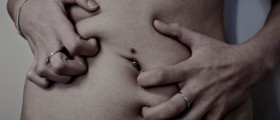
Eating Disorder OverviewEating disorder is a term that referrers to a number of conditions featured by extreme disturbances in eating behavior. This includes either excess intake of food or severe reduction of food intake that affects physical and emotional wellbeing of a person.
Most common types of eating disorder in the U.S. are anorexia nervosa, bulimia nervosa and binge eating disorder. The cause of these disorders is unknown but it is believed that environmental, psychological and biological factors lead to their development.
Eating disorders affect both men and women and this trend is increasing worldwide. However, women, especially in developed countries, are more likely to suffer from eating disorders comparing to men. It has been estimated that 5-10 million females and around 1 million males in the United States have some form of the disorder.
Many eating disorders can be effectively managed with a professional treatment. On the other hand, eating disorders can sometimes have fatal outcome either due to direct effects of disturbances in eating habit or due to other accompanying diseases and disorders.
Types of Eating DisordersAnorexia NervosaAnorexia nervosa (AN) is a type of eating disorder that is manifested in extreme fear of weight gain and distortion of body image. It is a serious condition that can affect the heart and increase the risk of death due to a heart attack. Anorexia can also lead to thinning of bones, hair loss, dry skin, anemia, low blood pressure, lethargy and may affect menstrual cycle in females due to malnutrition.
Bulimia NervosaBulimia nervosa (BN) is featured by episodes of uncontrollable eating (binge eating) followed by behavior that compensate for overeating like purging. This includes self-induced vomiting, use of laxatives and diuretics, excessive exercise and fasting.
Binge Eating Disorder
Binge eating disorder (BED) is manifested in recurrent binge-eating but unlike bulimia, these episodes are not followed by compensatory behavior. People with this disorder are commonly overweight.
Purging DisorderThis disorder is followed by recurrent purging episodes in order to maintain weight, but without binge-eating episodes.
RuminationThis eating disorder is featured by repetitive regurgitation of food followed by rechewing and reswallowing or spitting out the food.
DiabulimiaThis eating disorder is seen in diabetics that deliberately use less insulin that they need in order to lose weight.
Food MaintenanceIt is a type of eating disorder featured by a set of abnormal eating habits of children in foster care.
Eating Disorders Not Otherwise Specified (EDNOS)
This term is used when a person has disordered eating habits but does not meet diagnostic criteria of any specific type of eating disorder.
Pica
This eating disorder is characterized by craving for and ingestion of non-food items such as soil, chalk, paper, glue, ice and plaster.
Night Eating Syndrome (NES)This disorder is featured by lack of appetite in the morning and overeating at night. It is one of the major causes of obesity and often associated with insomnia.
Orthorexia Nervosa
Orthorexia nervosa is characterized by obsession with healthy eating.
















Your thoughts on this
Loading...